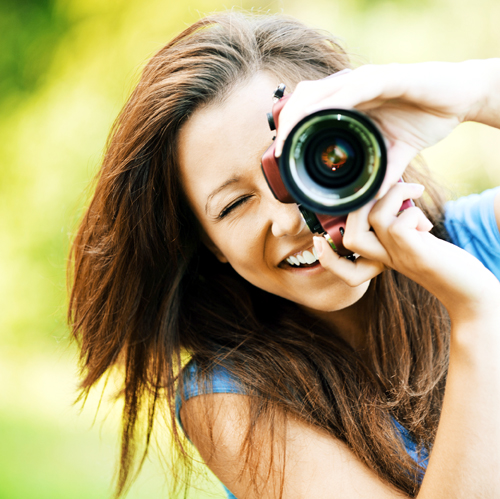
Shahnaz Husain
A smile works wonders, especially for the camera. When you smile you look happy and happiness is always attractive. If you are having your photograph taken, keep a few aspects in mind.
Remember that the image a camera produces is two dimensional. That is why extra attention has to be paid to emphasize or tone down certain features while applying make-up. Here are some tips if you are going to pose for the camera! The skin should be cleansed. If you use a facial scrub for deep cleansing, it may be even better, as it will make the skin look clearer. For oily skin, apply astringent lotion, using cotton wool. Oily areas of the skin will look shiny in photographs. For dry skin, apply a moisturising lotion. Then apply matte (non-shiny) foundation. The camera actually shows up flaws and blemishes, like wrinkles and lines, dark patches, or oily skin. The main foundation should be as close to the normal skin colour tone as possible. Avoid choosing one which is much lighter, as the face may look like a mask.
However, a lighter shade of foundation, helps to tone down certain features. Apply a lighter shade of concealer makeup or foundation to the darker areas on your face, like dark circles around the eyes, crevices and expression lines. Be careful to apply foundation on all exposed areas, like the neck and arms. While applying foundation on the face, blend it well at the jawline and hairline. Lines of demarcation should not show. Powder the oily areas, like nose, forehead and chin.
For a broad nose, apply a darker shade of foundation or bronzer on the sides of the nose and light colour down the centre. A matte bronzer under the cheekbones, creates cheek hollows and gives a more sculpted look to the features.
For pimples, just apply foundation over it. Wait for it to dry and then apply foundation on the entire face. Touch up the pimple again with foundation. Then apply powder to “set” the foundation.
To conceal pits (tiny holes) left by acne scars, take a foundation which is a shade or two lighter than the one you use on your entire face. Apply the light foundation into the pits, using a fine brush or cotton bud. A concealer can also be used. Then, apply your normal foundation on the rest of the face.
Avoid shimmery (shiny) blush on or eye shadows for the camera. It’s a good idea to keep the colours natural like light brown or a darker brown. Try a soft pink too. Choose eye shadow that is slightly darker than your skin colour and apply it in the crease of the eyes. Avoid harsh lines while applying make up. Try a smoky-colored eyeliner pencil. Smudge it with a sponge applicator or cotton wool. Or, dot the eyeliner just next to the eyelash, instead of drawing a harsh line. Or, apply liquid eyeliner on the top eyelid and at the outer corners. For the cheeks apply shades with soft pink, or peach tones. Try to bring about a balance among the eyes and lips.
Outline the lips with the same colour lip liner as your lipstick. Or outline with a slightly darker lip pencil and smudge it with sponge tipped applicator. Avoid a dark outline for the lips. Avoid very pale lip colours. Go for something more bright. Apply a little gloss only on the centre of the lips. Just before the photo is taken, powder the forehead and nose and then blot with tissue. These areas can look shiny in a photograph.
The head should be held naturally, so that the posture is not rigid. A slight tilt of the head will help. If you know which is your better side, tilt that side towards the camera. A natural smile, with slightly parted lips would be better.

